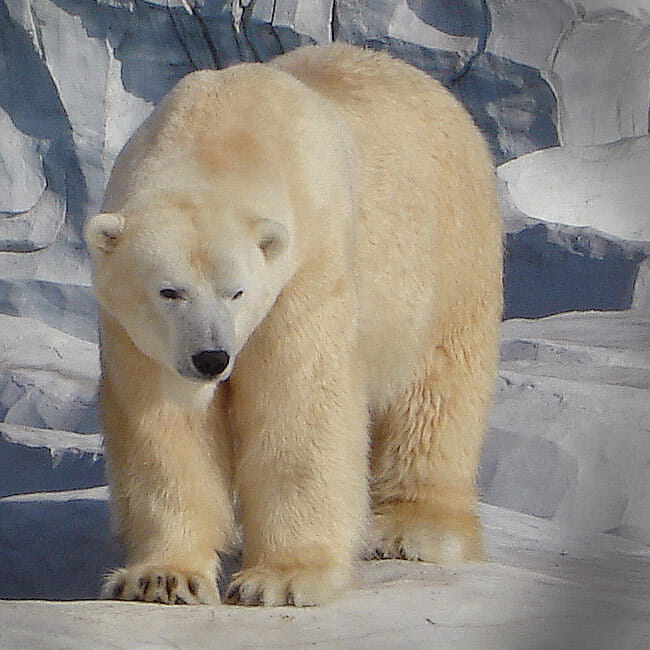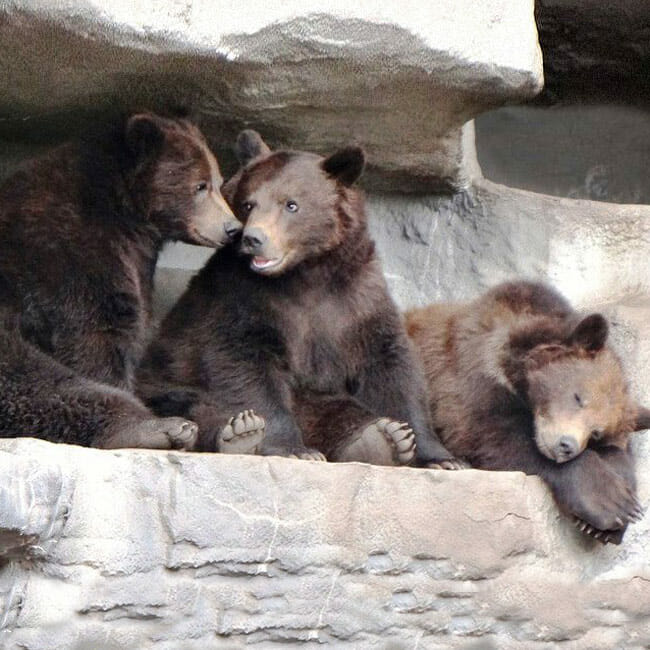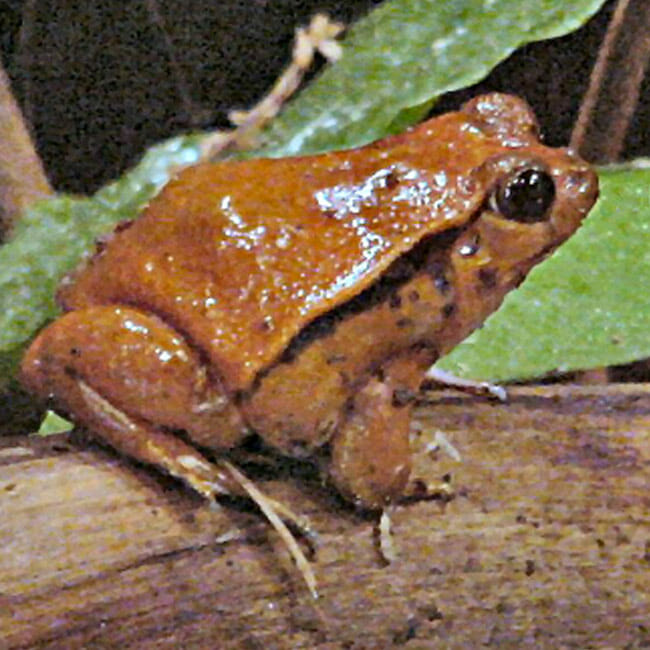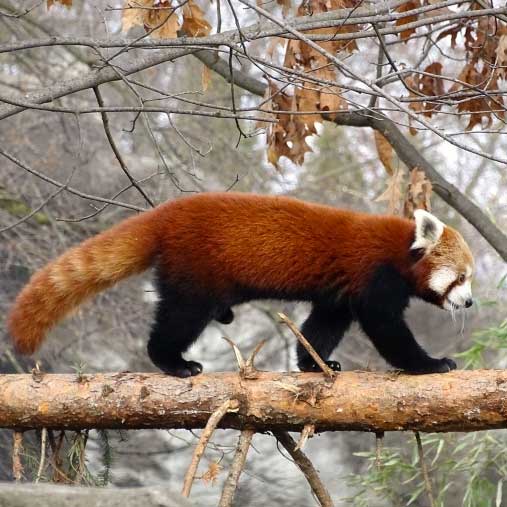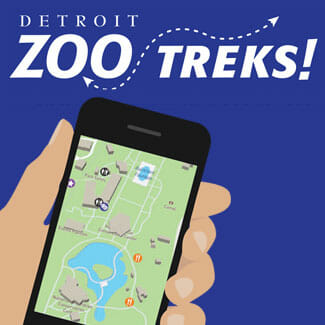Animal Rescues
The Detroit Zoological Society (DZS) is frequently asked to help with the rescue of exotic animals from private owners, pseudo-sanctuaries, roadside zoos and circuses. Through the DZS’s Kalter/Lezotte Fund for Wildlife Rescue, these animals are now receiving the appropriate health care, nutrition, enrichment, kindness and respect they deserve. Here are a few examples of some of our more noteworthy rescue efforts.
Bärle
Bärle was a polar bear that was born in the wild in Manitoba, Canada, but was captured as a cub and lived most of her years as a performing circus bear in scorching climates. In 2002, Bärle was rescued from the Suarez Brothers Circus in Puerto Rico and found sanctuary at the Detroit Zoo. Her arrival came shortly after we unveiled the largest polar bear facility in North America – the Arctic Ring of Life. She lived at the Detroit Zoo for 10 years, during which she became a mom to female Talini. Bärle came a long way from living in a tiny cage and performing circus tricks in an unhealthy environment to being a healthy, nurturing mother.
Bärle was a polar bear that was born in the wild in Manitoba, Canada, but was captured as a cub and lived most of her years as a performing circus bear in scorching climates. In 2002, Bärle was rescued from the Suarez Brothers Circus in Puerto Rico and found sanctuary at the Detroit Zoo. Her arrival came shortly after we unveiled the largest polar bear facility in North America – the Arctic Ring of Life. She lived at the Detroit Zoo for 10 years, during which she became a mom to female Talini. Bärle came a long way from living in a tiny cage and performing circus tricks in an unhealthy environment to being a healthy, nurturing mother.
Lions
Three lions that had been relegated to guarding a junkyard in Kansas found sanctuary at the Detroit Zoo after their rescue in 2009. A lioness found in a suspected drug house in Detroit in 1992 and a lion discovered in an abandoned house in Detroit in 1993 both lived out their remaining years in the care and comfort of the Detroit Zoo. Male Simba was owned by the royal family of Qatar before finding a new palace at the Detroit Zoo in 2012, where he currently resides.
Three lions that had been relegated to guarding a junkyard in Kansas found sanctuary at the Detroit Zoo after their rescue in 2009. A lioness found in a suspected drug house in Detroit in 1992 and a lion discovered in an abandoned house in Detroit in 1993 both lived out their remaining years in the care and comfort of the Detroit Zoo. Male Simba was owned by the royal family of Qatar before finding a new palace at the Detroit Zoo in 2012, where he currently resides.
Grizzly Bears Mike, Thor and Boo
Affectionately known as “the grizzly boys,” this trio of grizzly bear brothers was rescued as cubs after their mother was shot and killed by a poacher in Alaska. The Alaska Department of Fish and Game contacted the DZS, seeking a home for the then-10-month-old brothers. Mike, Thor and Boo have called the Detroit Zoo home since December 2011, arriving in Detroit via a FedEx plane.
Affectionately known as “the grizzly boys,” this trio of grizzly bear brothers was rescued as cubs after their mother was shot and killed by a poacher in Alaska. The Alaska Department of Fish and Game contacted the DZS, seeking a home for the then-10-month-old brothers. Mike, Thor and Boo have called the Detroit Zoo home since December 2011, arriving in Detroit via a FedEx plane.
Texas Rescue
In 2010, DZS provided assistance in the largest animal rescue operation in U.S. history, where more than 27,000 animals were seized from an international exotic animal dealer in Texas. Many DZS animal care staff worked tirelessly for months, giving countless animals their first-ever touch and expert care, including the basics of clean water, nutritious food, enrichment, kindness and respect. More than 1,100 of these animals found sanctuary at the Detroit Zoo, including 696 amphibians of 45 species, many of which can be seen in the National Amphibian Conservation Center.
In 2010, DZS provided assistance in the largest animal rescue operation in U.S. history, where more than 27,000 animals were seized from an international exotic animal dealer in Texas. Many DZS animal care staff worked tirelessly for months, giving countless animals their first-ever touch and expert care, including the basics of clean water, nutritious food, enrichment, kindness and respect. More than 1,100 of these animals found sanctuary at the Detroit Zoo, including 696 amphibians of 45 species, many of which can be seen in the National Amphibian Conservation Center.


